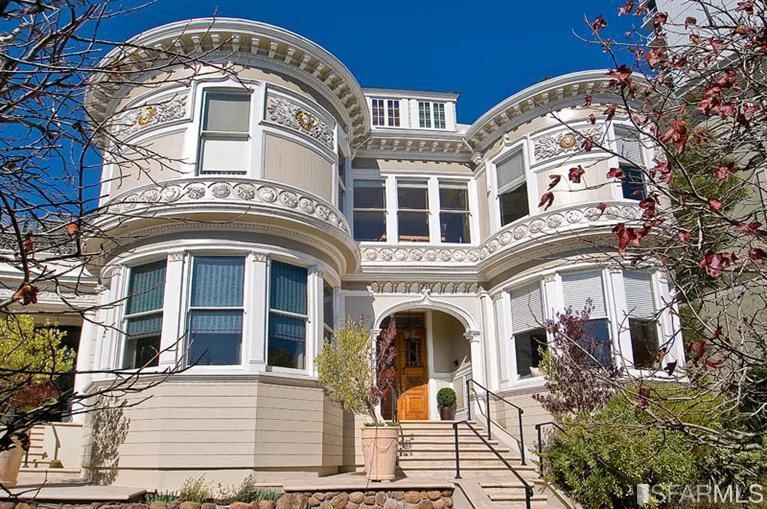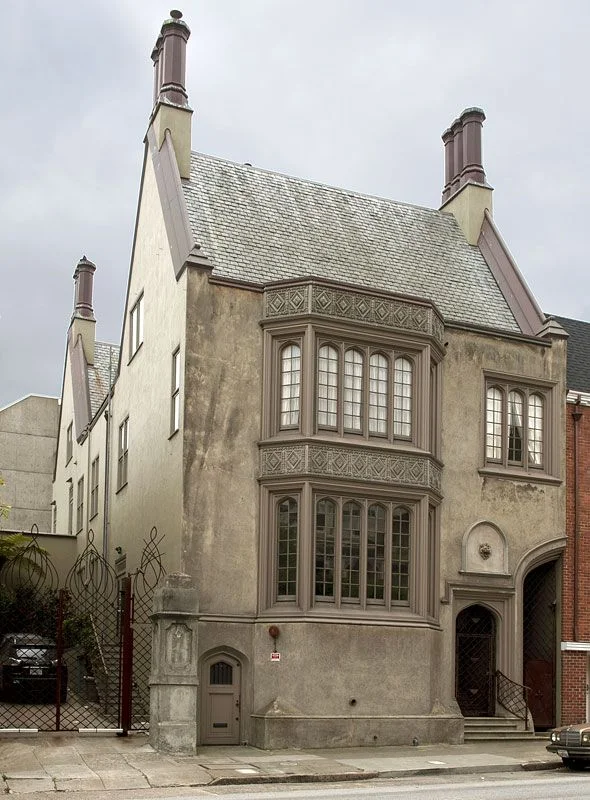30+ Years of Bay Area Real Estate Cycles
/Below is a look at the past 30+ years of San Francisco Bay Area real estate boom and bust cycles. Financial-market cycles have been around for hundreds of years, from the Dutch tulip mania of the 1600's through today's speculative frenzy in digital-currencies. While future cycles will vary in their details, the causes, effects and trend lines are often quite similar. Looking at cycles gives us more context to how the market works over time and where it may be going -- much more than dwelling in the immediacy of the present with excitable pronouncements of "The market's crashing and won't recover in our lifetimes!" or "The market's crazy hot and the only place it can go is up!"
Note: Most of these charts generally apply to higher-priced Bay Area housing markets, such as those found in much of San Francisco, Marin, Central Contra Costa (Lamorinda & Diablo Valley) and San Mateo Counties. (Different market price segments had bubbles, crashes - or adjustments - and recoveries of differing magnitudes in the last cycle, which is addressed at the end of this report.)
Regardless of how recent cycles have played out, it is vital to understand how extremely difficult it is to predict when different parts of a cycle will begin or end. Case in point: In 2012, a Nobel-Prize-winning economist stated that home prices might not recover "in our lifetimes," when in fact, the recovery had already (just) begun. In late 2015, when financial markets entered into a period of nasty volatility, IPO activity stopped in its tracks, and high-tech hiring slowed, a well-respected Berkeley economist prophesied there would soon be "blood in the streets" of San Francisco - however the market recovered and grew significantly more heated through mid-2018. Boom times can go on much longer than expected, or get second winds. Even when the financial markets enter a period of "irrational exuberance," that period can go on much longer than seems possible, with huge jumps in home and/or stock values.
On the other hand, negative shocks can appear with startling suddenness, triggered by unexpected economic, political or even ecological events that hammer confidence, quickly spinning optimism into fear. (The world has become staggeringly complex and interconnected, with a huge number of spinning plates at any given time.) This can lead to other market dominoes falling, the reversal of positive trends in growth, investment and employment, which may then balloon into a period of decline, recession, stagnation. These negative adjustments can be of varying scale. They can be in the nature of an extended but temporary period of high financial-market volatility and investor caution, such as caused by the Chinese stock market drop/oil price crash/Brexit vote in mid-2015 through mid-2016. It can be a definitive, era-defining financial-market crash or speculative bubble bursting, such as in 2008. Or the down cycle can occur gradually, like a slow leak in an over-pumped football.
As of early March, it is not yet known which category the coronavirus - a true "black swan" event - will fall into, whether a dramatic, but relatively temporary period high volatility, or the trigger for a plunge into an extended market recession in stock and housing values.
Going back thousands or even tens of thousands of years, human beings have tried to predict the future, and whether using priests, oracles, astrologers, pundits, economists, analysts or "experts" of every stripe - and currently having their "authoritative" forecasts headlined every day in the media - we show no aptitude as a species for having the ability to do so with any accuracy. We can't even remember the mistakes of the recent past - which is one reason why we don't seem to be able to escape cycles - much less foretell what's going to happen tomorrow.
Confidence plays an enormous role in financial and real estate markets, and in every period of irrational exuberance, there are many who vociferously argue that the exuberance is NOT irrational. Unfortunately, it can be very challenging to determine the point at which rational confidence shifts into irrational exuberance, but when irrational exuberance abruptly shifts into fear, a stampede for the exits can follow - as an old English saying puts it: "They run all away, and cry, 'the devil take the hindmost'." In retrospect, the duration of periods of irrational exuberance, when market gains often accelerate into the stratosphere, seems utterly incomprehensible. Such are the pleasures of hindsight.
All the major recessions in the Bay Area in recent decades have been tied to national or international economic crises, which can take a wide variety of forms. Absent an enormous natural disaster, it is unlikely that a major, negative market adjustment (or "crash") would occur due simply to local issues. However, local issues can certainly lead to less dramatic market adjustments, or exacerbate a downturn caused by a macro-economic event. The SF earthquake of 1989 intensified the national recession that began at that time; our greater exposure to dotcom start-ups did the same with the national dotcom-bubble/Nasdaq crash.
Market Cycles: Simplified Overviews
Up, Down, Flat, Up, Down, Flat...(Repeat)
The chart below graphs ups and downs by percentage changes in home prices at each turning point.
Smoothing out the bumps - temporary periods of volatility with their ups and downs - delivers the simplified overview above for the past 30 years.
Whatever the phase of the cycle, up or down, while it is going on people think it will last forever. Going up, "The world is different now, the rules have changed, and there's no reason why the up-cycle can't continue indefinitely." Well, it turns out that the rules do indeed still apply and up-cycles always end. And then when the market turns and goes down: “Homeownership has always been a terrible investment and the market probably won't recover for decades” (or even "in our lifetimes" as the Nobel-Prize-winning economist said in 2012). But the economy mends, the population grows, people start families, inflation builds up over the years, and repressed demand of those who want to own their own homes builds up. In the early eighties, mid-nineties and in 2012, after about 4 years of a recessionary housing market, this repressed demand jumped back in (or "explodes" might be a good description) and prices started to rise again. (The dotcom bubble adjustment caused a hiccup, but no lasting recession in home values.)
The nature of cycles is to keep turning.
All bubbles are ultimately based on irrational exuberance, runaway greed, criminal behavior or, not uncommonly, all three mashed together. Whether exemplified by junk bonds, stock market hysteria, gorging on untenable levels of debt, a corporate ponzi-scheme mentality, an abandonment of reasonable risk assessment, and/or incomprehensible or dishonest financial engineering, the bubble is relentlessly pumped bigger and tighter - awaiting the trigger event that will play the role of pin. And since human beings appear utterly unable or unwilling to learn the lessons of past cycles, it is kind of like the movie "Groundhog Day," except that in the movie at least, Bill Murray actually grew wiser over time.
The 2008 crash was truly abnormal in its scale, and much greater than other downturns going back to the Great Depression. The 2005-2007 bubble was fueled by home buying and refinancing with unaffordable amounts of debt on a staggering level, promoted by predatory lending practices, promises of endless appreciation, and an abysmal decline in underwriting standards - and then eagerly facilitated by smug, rapacious, Wall Street flimflammery and self-abasing credit ratings agencies. Millions came to own homes they could never afford to pay for and the rot was distributed throughout the financial system. The market adjustments of the early 1990's and early-2000’s saw declines in Bay Area home values in the range of 10% to 11%, which were bad enough, but nothing compared to the terrible 2008 - 2011 declines of 20% to 60%.
This is important context when contemplating the next adjustment: It doesn't have to be a devastating crash. It can be more like some air being let out of an over-pressurized tire instead of a blowout on the highway at high speed. It depends on many different factors.
1996 to Present
(After Recession) Boom, Bubble, Crash, Doldrums, Recovery
This next cycle looks similar but elongated. In 1996, after years of recession, the market suddenly took off and continued to accelerate til 2001. The dotcom bubble pop and September 2001 attacks created a market hiccup (a short-term 10% decline, but only for high-price tier houses, and for condos), but then the subprime and refinance insanity, degraded loan underwriting standards, mortgage securitization, and claims that real estate values never decline, super-charged a housing bubble. Overall, from 1996 to 2006/2008, the market went through an astounding period of appreciation. (Different areas hit peak values at times from 2006 to early 2008.) The air started to go out of some markets in 2006-2007, and in September 2008 came the financial markets crash.
Across the country, home values typically fell 20% to 60%, peak to bottom, depending on the area and how badly it was affected by foreclosures -- most of San Francisco, with relatively few foreclosures, got off comparatively lightly with declines in the 15% to 25% range. The least affluent areas got hammered hardest by distressed sales and price declines; the most affluent were usually least affected. Then the market stayed flat for about 4 years, albeit with a few short-term fluctuations. Tied to a rapidly recovering economy, supply and demand dynamics began to significantly change in San Francisco in mid-2011, leading to the market recovery of 2012.
******************************
The Recovery since 2012 (per Case-Shiller)
This chart above looks specifically at home price appreciation since 2012 when the current market recovery began. Generally speaking, the spring selling seasons have seen the most dramatic surges in appreciation. It's not unusual for appreciation to slow or flatten in the second half of the year.
*****************************
San Francisco Median Sales Price Appreciation
The charts below look at median sales price movements in San Francisco County itself over the shorter and longer terms. These do not correlate exactly with Case-Shiller - firstly because C-S tracks a "metro area" of 5 Bay Area counties, and secondly, because C-S uses its own proprietary algorithm and not median sales prices. Median sales prices are often affected by other factors besides changes in fair market value (such as significant changes in the distressed, luxury and new-construction market segments; seasonality; buyer profile; and so on).



























